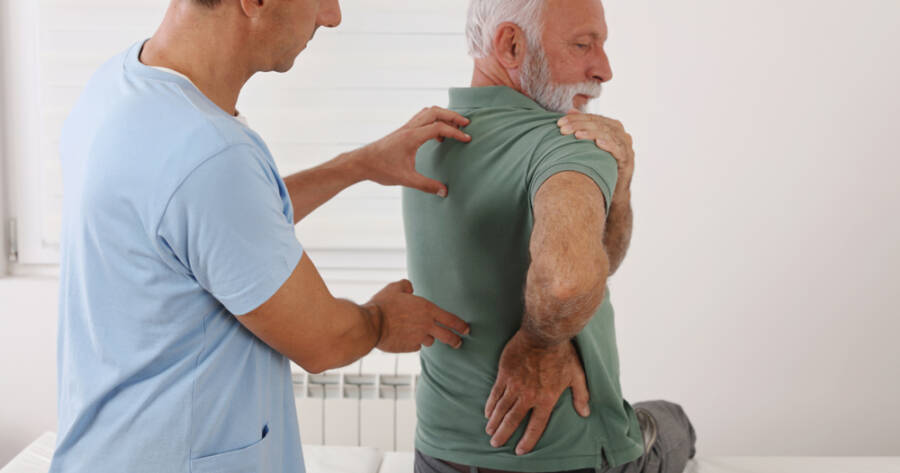Spinal stenosis is a common condition that often affects people over 50. It occurs when the spaces within the spine narrow, putting pressure on the nerves that travel through it. Recognizing the symptoms of spinal stenosis early on can make a big difference in managing it effectively. Ignoring signs may lead to increased pain or even severe complications, making it crucial to stay informed and alert.
What is Spinal Stenosis?
Spinal stenosis happens when the spaces in the spine become narrow. This condition can develop in various areas, including the neck (cervical stenosis) or the lower back (lumbar stenosis). Most people develop spinal stenosis due to aging, but factors like arthritis, herniated disks, or spinal injuries can also lead to it. The condition tends to progress gradually, so symptoms may start subtly and worsen over time.
Spinal stenosis can limit movement, cause discomfort, and, in severe cases, lead to issues with balance, bladder, or bowel control. The earlier you detect the symptoms, the easier it is to address them and avoid long-term complications.
Recognizing the Symptoms of Spinal Stenosis
Recognizing spinal stenosis is often tricky because its symptoms overlap with other back and neck problems. Here are some signs that should raise a red flag:
Pain and Numbness
Pain in the neck, back, or legs is one of the earliest signs of spinal stenosis. This pain may come and go, often intensifying after standing or walking for a long time. Along with pain, some people experience numbness, tingling, or a “pins and needles” sensation in the arms, legs, or buttocks. These sensations indicate that the spinal nerves are under pressure.
Weakness and Muscle Cramping
If you notice unexplained weakness in your arms or legs, spinal stenosis could be the cause. Many people with spinal stenosis report frequent muscle cramping, especially after physical activities.
These symptoms may worsen with prolonged movement and improve when bending forward or sitting. Weakness or cramping in the legs, especially when standing or walking, can be an early warning sign that shouldn’t be ignored.
Balance and Coordination Issues
Since the spinal nerves play a vital role in balance and coordination, spinal stenosis can affect both. Many people with this condition experience unsteadiness or feel as though they might fall.
Trouble walking in a straight line or needing support to stand steadily can be signs of nerve compression caused by spinal stenosis. Not addressing these symptoms early on can lead to a higher risk of falls or injuries.
Why Spinal Stenosis Symptoms Shouldn’t Be Ignored
Ignoring symptoms of spinal stenosis may lead to more than just discomfort. Here’s why it’s essential to pay attention:
Potential for Increased Pain and Limited Mobility
If left untreated, spinal stenosis can cause significant pain and limit your ability to move. This condition can make simple tasks like walking, bending, or even sleeping difficult.
While the pain may start mildly, it often worsens over time, leading to a reduced quality of life. Addressing symptoms early may help you manage the condition better, often through physical therapy, medications, or minor lifestyle adjustments.
Risk of Permanent Nerve Damage
In severe cases, spinal stenosis can cause permanent nerve damage. The longer the nerves remain compressed, the higher the risk of long-term issues.
Permanent nerve damage may lead to chronic pain, loss of function, or issues with bladder and bowel control. Early intervention, especially when symptoms first appear, can help avoid such complications and improve your long-term prognosis.
Managing Spinal Stenosis for Better Quality of Life
Effective management of spinal stenosis can greatly improve quality of life. Here’s how you can handle this condition with the right steps:
Physical Therapy and Exercise
Physical therapy can strengthen the muscles around the spine, providing better support and reducing strain on the spine. A physical therapist can recommend exercises that improve flexibility, balance, and strength without worsening symptoms. Regular exercise may not only reduce pain but also help maintain mobility.
Lifestyle Adjustments
Simple lifestyle changes, like adjusting your posture or avoiding heavy lifting, can relieve symptoms of spinal stenosis. Maintaining a healthy weight is also beneficial since extra pounds put additional stress on the spine. Small adjustments, like using supportive chairs or avoiding prolonged periods of standing, can prevent symptoms from worsening.
Medical Treatments and Surgery
In some cases, medication or injections can help manage pain. Anti-inflammatory drugs can relieve swelling around the nerves, while corticosteroid injections reduce inflammation and provide temporary pain relief.
If conservative methods don’t help, surgery may be considered to create more space within the spine. Options like laminectomy or spinal fusion can relieve nerve pressure and restore movement.
Don’t Ignore the Warning Signs
Spinal stenosis is a progressive condition, which means early detection is crucial to preventing more severe symptoms. By staying alert to signs like pain, numbness, and issues with balance, you can catch spinal stenosis early and manage it effectively.
Treatment options range from physical therapy to surgery, and each can help you maintain a comfortable, active lifestyle. Recognizing and addressing spinal stenosis early is key to enjoying better mobility, less pain, and a healthier future.

